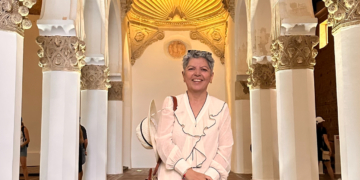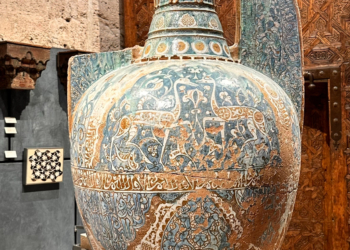Gallery Text
For many French artists during the 1860s, the floral still life persisted as a test of pure painterly ability. This exuberant bouquet in a Japanese vase from early in Renoir’s career attests to the artist’s engagement with past art historical traditions. He addresses the ennobled Dutch practice of still life through the large scale of his canvas, while his attention to the textures and colors of the arrangement evokes the work of early eighteenth-century French painters like Antoine Watteau and François Boucher— artists he had studied as a teenager while working as a porcelain painter. The painting also demonstrates Renoir’s development as an artist. Instead of applying the paint with a palette knife— a technique he borrowed from artists such as Courbet— Renoir adopted a freer and thinner stroke using solely a brush.
Spring Flowers


Gallery Text
Renoir painted Gabrielle Renard (1879–1959) more than two hundred times. In several of the portraits, she wears the same informal, square-necked gown seen here. By 1908, she had been employed in Renoir’s household for fourteen years, as a nanny, housekeeper, model, and companion to the aging artist.

Gallery Text
Following a trip to Italy in 1881–82 to study the masterpieces of ancient Roman and Renaissance painting, Renoir embarked on one of his most innovative periods. As he later recalled, “Around 1883 there occurred what seemed to be a break in my work. I had wrung impressionism dry.” Exploring the canonical theme of female nude bathers, Renoir titled a work similar to this one Naiad, or water nymph, highlighting the figure’s classical inspiration. Her pose recalls a well-known Roman sculpture of a bathing nymph; it also evokes a long tradition in painting of depicting nude figures in a landscape
Gallery Text
This is one of two pendant portraits that Renoir painted of his elder brother, Pierre Henri, and his wife, Blanche-Marie Blanc (1841–1910?).

Gallery Text
An employee at the Ministry of Finance, Victor Chocquet (1821–1891) met Degas in 1875, and by the second impressionist exhibition, in 1876, had become an avid supporter of the progressive artistic movement, collecting works by Renoir, Monet, and Cézanne. Here Renoir paints his new friend and patron dressed in casual attire.
























